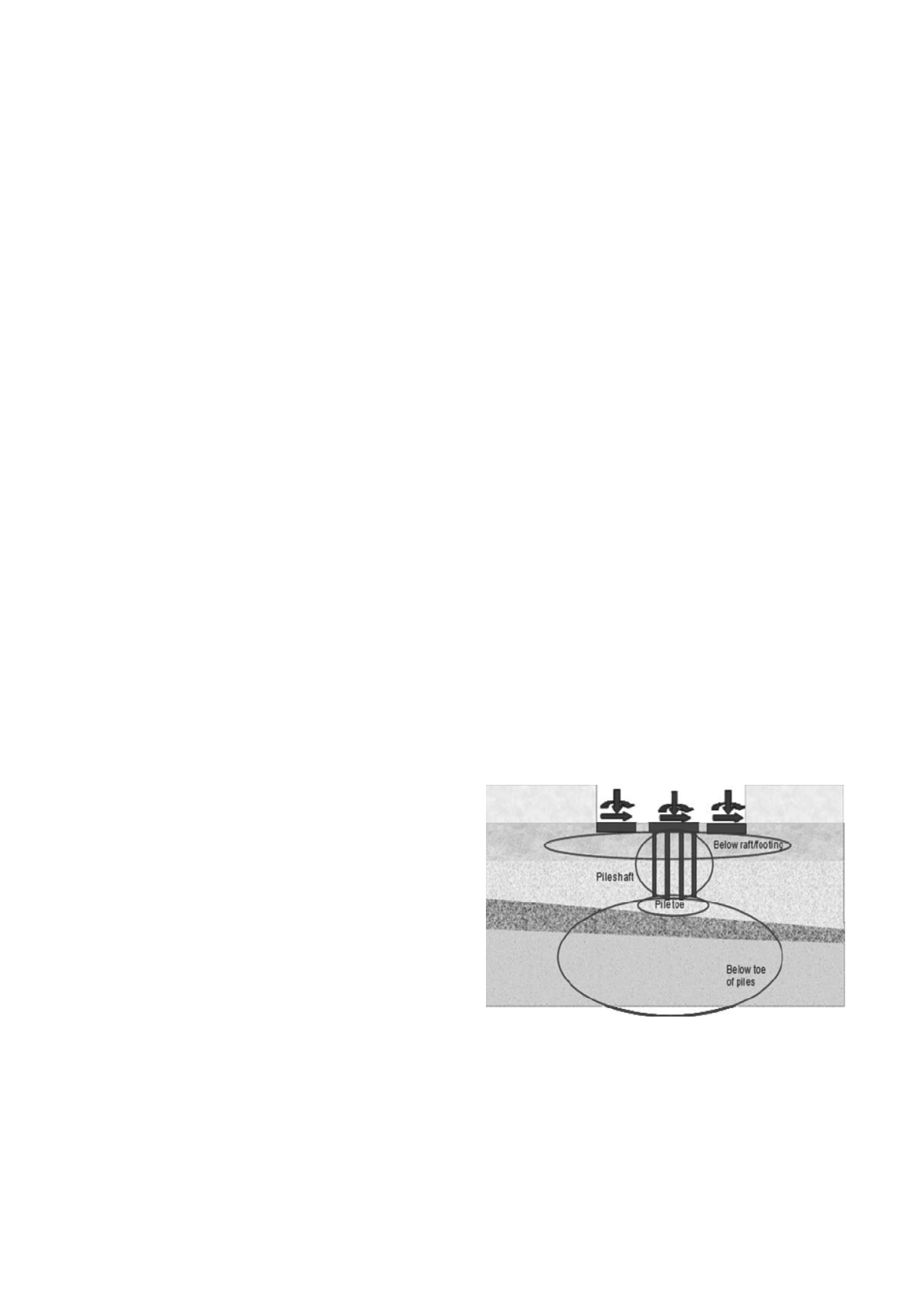
2743
Practical experience with piled raft design for tall buildings
Expérience pratique de la conception de radiers sur pieux pour les immeubles de grandes hauteurs
Haberfield C.M.
Golder Associates Pty Ltd Melbourne, Australia
ABSTRACT: For many tall buildings, a practical and cost effective foundation solution is provided by a piled raft. Recent research
and field observations have shown that in practically all cases, serviceability conditions control the behaviour of the footings. The
design of a piled raft usually requires non-linear analysis in three dimensions, based on detailed knowledge of the ground conditions,
the soil and rock properties (especially modulus and its variation with strain), structural loads and raft geometry. Information on
ground properties can only reliably be obtained from a detailed ground investigation with a heavy reliance on quality insitu testing.
Further information can be obtained from instrumented pile load testing. This paper describes the design of the pile rafts for two tall
towers: the 1000 m Nakheel tower in Dubai, which is founded on weak carbonate rocks and a group of tall towers (up to 300 m high)
founded in deep alluvial deposits.
RESUME: La construction de radiers sur pieux offre une solution pratique et économique pour les fondations de nombreux
immeubles de grande hauteur. Les observations récentes faites sur le terrain et dans le domaine de la recherche ont montré que, dans
pratiquement tous les cas, les conditions de service contrôlent le comportement de ces fondations. La conception d'un radier sur pieux
nécessite généralement une analyse non linéaire tridimensionnelle, basée sur une connaissance approfondie de l'état du sol en
profondeur, des propriétés du sol et de la roche (en particulier le module et sa variation avec la déformation), des charges appliquées
par la structure et de la géométrie du radier. Les données sur les propriétés du sol et/ou de la roche ne peuvent être obtenues de
manière fiable qu’à partir d'une campagne de reconnaissance géotechnique dé
taillée et avec des essais de bonne qualité. Des
informations complémentaires peuvent être obtenues à partir d
’
essais de chargement de pieu. Cet article décrit la conception des
radiers sur pieux de deux tours de grande hauteur: la tour Nakheel de 1000m de hauteur, à Dubaï, fondée sur des roches carbonatées
de faibles caractéristiques et un groupe de tours (jusqu'à 300 m de hauteur), fondées en profondeur dans des dépôts alluvionnaires.
KEYWORDS: piled raft, insitu testing, settlement, pile load testing
1 FACTORS AFFECTING FOOTING PERFORMANCE
For a typical pile-supported footing, it is necessary to consider
both individual pile, pile group and raft performance. These
require consideration of the behaviour of the ground in critical
locations:
Immediately beneath the surface raft or footing, where
the important factors are strength for bearing capacity
and stiffness for settlement and interaction effects.
Along the pile shaft where the factors of most interest
are strength for bearing, excavatability and stability;
stiffness for settlement and interaction effects;
geology and permeability for pile stability and, most
importantly, pile shaft resistance.
At the pile toe where all the factors for the pile shaft are
present and in addition the pile end bearing is of
interest.
Beneath the pile where stiffness for pile settlement is
important for a depth of at least twice the building
width.
Recent research and field observations have shown that in
practically all cases, serviceability conditions control the
behaviour of the footings. Therefore this paper concentrates on
evaluation of ground modulus for the calculation of behaviour
at serviceability limit state.
Figure 1 Areas of interest for footing design
2 METHODS OF GROUND INVESTIGATION
For many tall buildings, the ground investigation is required to
extend to significant depths (e.g. up to 200 m for the Nakheel
tower) due to the heavy loads and relatively large plan area of
the building. Where footings do not found on relatively strong
rock, a major component of settlement can result from
compression of the soil or weak rock below the pile toe. The


